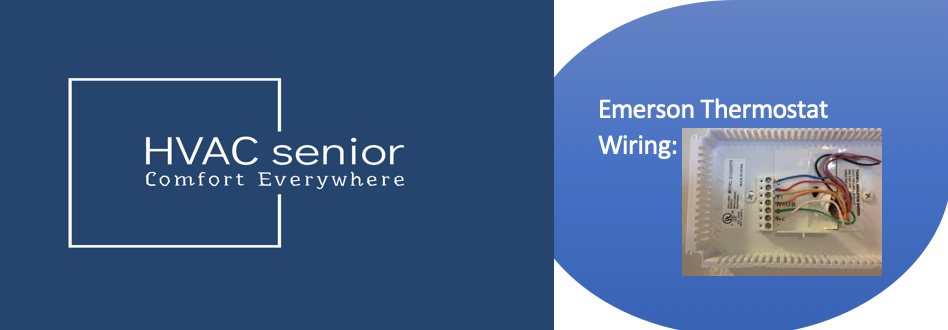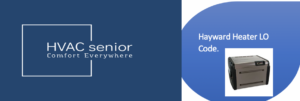If you’ve discovered water pooling around your furnace, you’re not alone. A furnace leaking water is one of the most common winter maintenance issues homeowners face, especially when heating systems run full-time.
Although alarming, not all furnace leaks are indicative of serious problems. The key is identifying where the water is seeping from and acting fast before it leads to mold, rust, or system damage.
Within this comprehensive guide, we are going to cover the following aspects:
- Top causes of furnace water leaks
- How to identify the problem
- Step-by-step solutions
- When to Call an HVAC Technician
Common Reasons Why Your Furnace Is Leaking Water
Before you reach for that mop, it’s important to understand that different types of furnaces-standard versus high-efficiency-have different causes when it comes to water leaking.
1. Condensation Leak (High-Efficiency Furnace)
If you have a high-efficiency condensing furnace-known as a 90% AFUE or higher-rated furnace-then condensation is a normal part of its operation. The furnace pulls extra heat off the exhaust gases, and that creates condensation that should drain away through a PVC pipe.
If it becomes clogged or damaged in any way, that water will back up and leak.
Signs:
- Furnace exhaust pipes are white PVC
- Water pooling under or near the furnace
- Dripping from condensation lines or near the floor drain
Make the following changes:
- Turn off your furnace.
- Check the condensate drain line for any blockages or damage.
- Use a wet/dry vacuum to clear the blockage.
- Check that the drain trap is not full of debris.
- Make sure the line slopes downward toward the floor drain.
If the leaks continue to recur, the condensate pump could be defective-see below.
2. Condensate Pump Failure
In some configurations, gravity alone does not allow the furnace to drain water. It’s here that a condensate pump comes into play: it gathers and pushes the water to a drain or sink.
If it fails, the water collects around the base of your furnace.
Signs:
- Puddles near the furnace after long heating cycles
- Gurgling or bubbling noises from the pump
- Water backup causes furnace to shut off
Fix:
- Unplug the reservoir and wash the pump.
- Check the inlet and outlet tubing for blockages or kinking.
- Make sure the float switch isn’t stuck.
- Replace the pump if it is not actuating correctly.
Pro Tip: The cost of a tiny pump is between $60–$150; most homeowners can install one themselves.
3. Clogged Furnace Filter
A dirty air filter might cut down the airflow and make the evaporator coil freeze (in systems combined with central air). As it melts, it releases excess water that may pool around your furnace.
Fix:
- Turn your system off and replace the air filter.
- Get rid of any water accumulation.
- Let the system dry for 24 hours before restarting it.
- Avoid recurrences by changing your filter every 1–3 months.
4. Blocked or Broken Condensate Drain Line
Even when your furnace is fine, the drain line that carries condensation away may easily clog with algae, dirt, or dust, especially if you run an air conditioner through the same drainage path.
Signs:
- Water leaking near the base of the furnace
- A musty smell or visible slime in the drain line
- Intermittent shutdown of furnace
Correcting:
- Disconnect and inspect the PVC or rubber tubing.
- Flush it with a 50/50 mixture of vinegar and warm water.
- Use compressed air or a wet/dry vacuum to remove buildup.
- Pour a cup of vinegar down the drain every month to avoid clogs.
5. Humidifier Leak-Connected to the Furnace
Many homes have a whole-house humidifier directly connected to the furnace. It adds humidity into the air with the help of water, but over some time, the water line or valve can break and cause leaks.
How to tell:
- Water accumulating either below or around the humidifier unit
- Corrosion or mineral deposits on the humidifier pad
- Leak occurs even when the furnace isn’t running
Correction:
- Turn off the furnace and humidifier water supply.
- Check the water line and fittings for cracks.
- Replace the humidifier filter pad if clogged or calcified.
- If the solenoid valve is leaking, it may need replacement.
Also read: Heater Fan not Working.
6. Plumbing Leak Near Furnace
Sometimes the problem isn’t with the furnace at all; rather, it’s a leaking pipe or joint near the system that happened to drip onto or under it.
How to check:
- Check for drips at the pipes above or beside your furnace.
- Check for rust-like residue or water stains.
- If the furnace is located in a basement, check for ceiling leaks from plumbing lines above.
Loosen any loose joints or hire a plumber if the source of the smell is not the furnace itself.
7. Evaporator Coil Leak – For HVAC Combos
If your home uses a combined heating and cooling system, the evaporator coil sits on top of your furnace. When the AC runs, moisture forms on the coil and drains away. If that drain pan cracks or the line clogs, water leaks onto your furnace cabinet.
Fix:
- Check the area of the coil above the furnace: remove the access panel carefully.
- Clean the drain pan and tubing of any debris.
- Replace the pan if it is rusted or cracked.
8. Condensing Heat Exchanger-Old Furnace Models
Standard-efficiency furnaces (less than 90% AFUE) aren’t designed to produce condensation. If you find water leaking from an older furnace, it may mean condensation is forming where it shouldn’t (in most cases due to a failing heat exchanger).
Warning signs:
- Water leaking mixed with soot or rust
- Metallic or chemical smell near the furnace
- Unusual noises when starting or stopping
⚠️ Safety alert: A cracked heat exchanger can leak carbon monoxide.
Turn off your system and call a licensed HVAC technician immediately.
Troubleshooting Step by Step
Take the following quick steps, before calling in the professionals, to diagnose the problem:
Turn off the furnace.
Unplug it or switch off the circuit breaker to prevent electrical hazards.
Wipe up visible water.
Use towels or a wet/dry vacuum to clear the area so you can monitor new leaks.
Inspect visible lines.
Look for cracks, disconnections, or buildup in PVC drain lines and tubing.
Check the humidifier and filter.
Shut off the humidifier water valve. Replace dirty filters.
Restart the system and observe.
After drying and cleaning, turn your furnace back on and monitor for leaks over the course of an hour.
If the water returns back immediately, then the problem is usually in the condensate line, pump, or humidifier. If it’s a bit longer, then either the evaporator coil or the heat exchanger is involved.
When to Call an HVAC Technician
Some leaks are quick fixes, while others deal with deeper mechanical or safety concerns.
Call a professional if:
- The furnace is still leaking even after you have cleared the drains and filters.
- You smell gas or chemicals
- You notice rust, soot, or corrosion
- You suspect a cracked heat exchanger
- Your furnace stops heating altogether
A certified HVAC technician can pressure-test your system, replace faulty parts, and ensure your furnace is safe to operate.
Cost of Fixing a Furnace Leak
| Cause | Typical Cost (USD) | Notes |
| Clogged condensate line | $75 – $200 | Easy to fix yourself |
| Condensate pump replacement | $150 – $350 | Includes labor |
| Humidifier valve or pad replacement | $100 – $250 | Common in winter |
| Drain pan or coil leak | $200 – $600 | May require disassembly |
| Heat exchanger repair | $1,000 – $2,500 | Often means full replacement |
Consider replacing your furnace instead of repeatedly paying to repair it if it is more than 15 years old.
Also read: White Dust from Your Heater
Preventing Future Furnace Leaks
Here’s how to stop water leaks before they start:
- Replace your air filter regularly — every 1–3 months.
- Condensate lines should be checked every six months for blockages or build-up.
- You can prevent algae from building up in the drain line by flushing it with vinegar once a month.
- Schedule annual HVAC maintenance — ideally before winter.
- Keep the area around your furnace dry and clutter-free.
- Upgrade aging systems if you experience repeated leaks or corrosion.
Routine maintenance will also help prevent water damage and improve heating efficiency while providing good indoor air quality.
FAQ: Furnace Leaking Water
Why is my furnace leaking water when the heat is on?
If your furnace leaks water during heating, it is likely a condensate drainage issue, clogged filter, or malfunctioning humidifier. High-efficiency furnaces create condensation that must drain correctly.
Can a leaking furnace cause damage?
Yes. Continuous leaks might lead to rusting, mold growth, or electrically damaging the furnace and areas around it. Always address leaks to avoid expensive repairs.
Can I use my furnace if it’s leaking water?
It’s best not to. Turn it off until you find the source. Running a leaking furnace can make the problem worse, and it may damage internal components.
How do I know if it’s my humidifier or furnace leaking?
If the water shows up even when the furnace is off, then it’s probably coming from your humidifier. If it only leaks when it’s heating, it’s likely the condensate drain or pump.
Is a furnace water leak dangerous?
Most are not immediately dangerous, but if there’s any gas smell, soot, or unusual odor, shut down your furnace and call a technician; it could indicate a cracked heat exchanger or carbon monoxide risk.
Final Thoughts
A water leak from the furnace is not just a nuisance; it is a warning that something is not draining, sealing, or heating right. Fortunately, most leaks are caused by simple issues like clogged lines, dirty filters, or pump failures that can be fixed with minimum effort. If you have tried all the basic steps and your furnace still leaks, do not wait. A quick inspection by an HVAC professional can prevent costly water damage and ensure your heating system will continue to run safely and efficiently throughout the winter.









